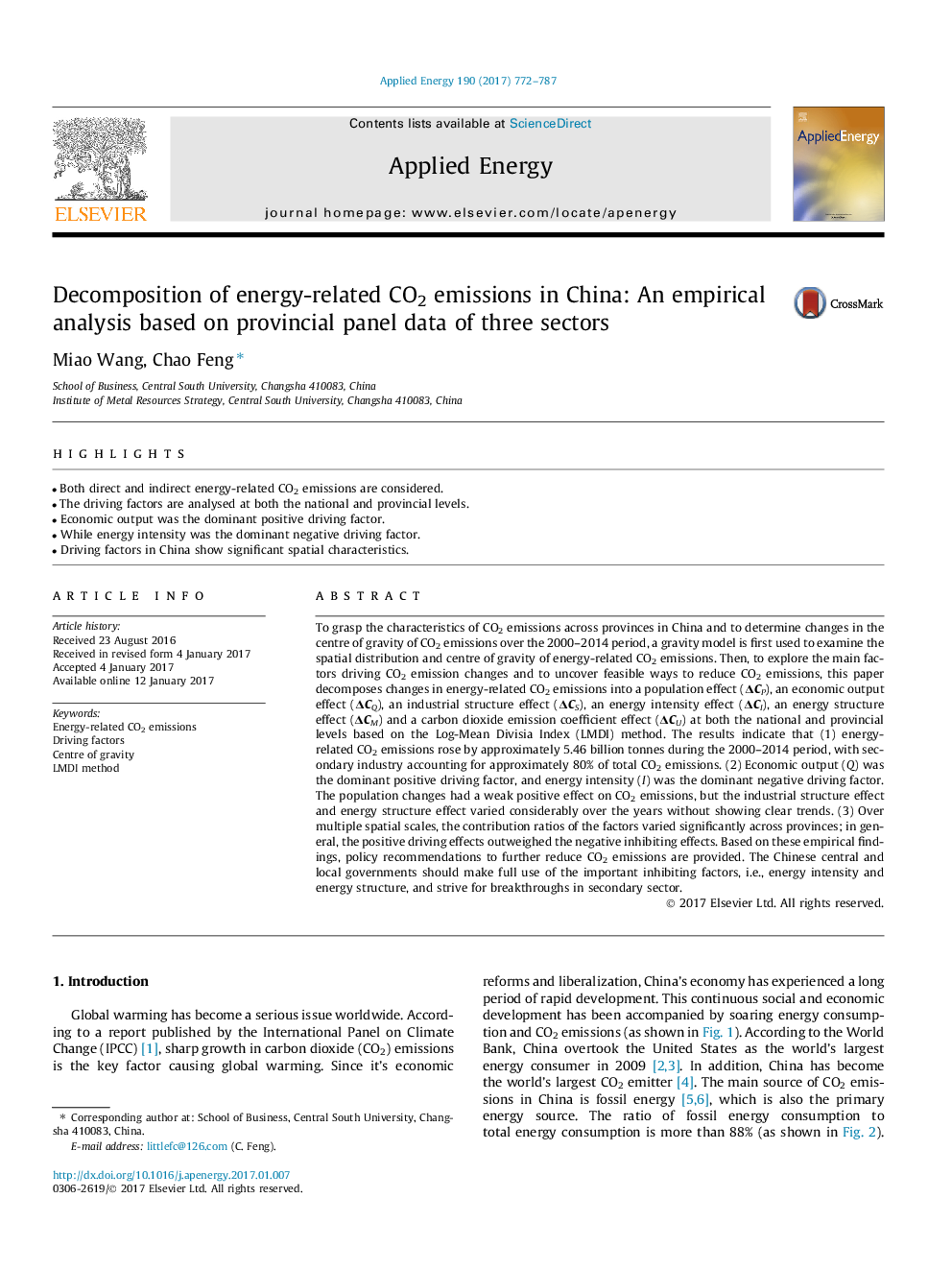| کد مقاله | کد نشریه | سال انتشار | مقاله انگلیسی | نسخه تمام متن |
|---|---|---|---|---|
| 6478596 | 1428100 | 2017 | 16 صفحه PDF | دانلود رایگان |
- Both direct and indirect energy-related CO2 emissions are considered.
- The driving factors are analysed at both the national and provincial levels.
- Economic output was the dominant positive driving factor.
- While energy intensity was the dominant negative driving factor.
- Driving factors in China show significant spatial characteristics.
To grasp the characteristics of CO2 emissions across provinces in China and to determine changes in the centre of gravity of CO2 emissions over the 2000-2014 period, a gravity model is first used to examine the spatial distribution and centre of gravity of energy-related CO2 emissions. Then, to explore the main factors driving CO2 emission changes and to uncover feasible ways to reduce CO2 emissions, this paper decomposes changes in energy-related CO2 emissions into a population effect (ÎCP), an economic output effect (ÎCQ), an industrial structure effect (ÎCS), an energy intensity effect (ÎCI), an energy structure effect (ÎCM) and a carbon dioxide emission coefficient effect (ÎCU) at both the national and provincial levels based on the Log-Mean Divisia Index (LMDI) method. The results indicate that (1) energy-related CO2 emissions rose by approximately 5.46 billion tonnes during the 2000-2014 period, with secondary industry accounting for approximately 80% of total CO2 emissions. (2) Economic output (Q) was the dominant positive driving factor, and energy intensity (I) was the dominant negative driving factor. The population changes had a weak positive effect on CO2 emissions, but the industrial structure effect and energy structure effect varied considerably over the years without showing clear trends. (3) Over multiple spatial scales, the contribution ratios of the factors varied significantly across provinces; in general, the positive driving effects outweighed the negative inhibiting effects. Based on these empirical findings, policy recommendations to further reduce CO2 emissions are provided. The Chinese central and local governments should make full use of the important inhibiting factors, i.e., energy intensity and energy structure, and strive for breakthroughs in secondary sector.
Journal: Applied Energy - Volume 190, 15 March 2017, Pages 772-787
